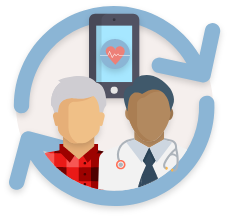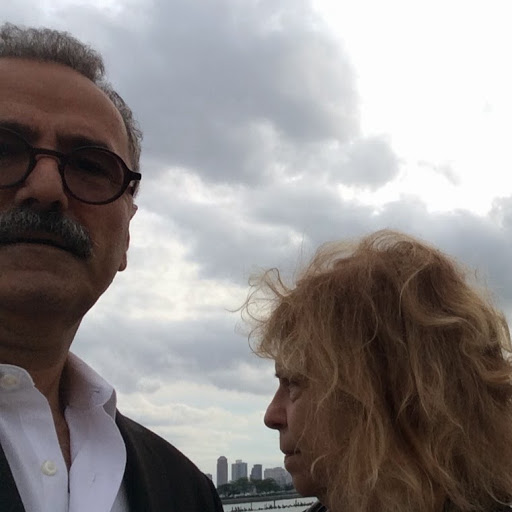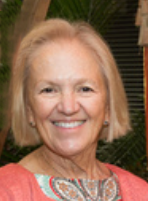SyncHealth Inc: Patient-to-clinician home BP and medication monitoring
by Raja Cholan
Patient-to-clinician blood pressure (BP) monitoring - we deliver home BP measurements and patientreported medication administrations to clinicians, and compare vs clinic measurements.
Portland, OR United States Patient and Provider Tools Healthy Living AMIA challengeAbout our project

The problem we solve: American adult hypertension has a prevalence of ~29%, affecting ~75 million people, and contributes to all cardiovascular disease. Although ambulatory blood pressure measurements are the gold standard in clinical guidelines and quality measures, there is strong evidence that suggests home blood pressure monitoring is of more clinical significance. Clinicians have to compare EHR data against home data in 3rd party apps on patients’ phones/tablets, or manually tracked inExcel, or hand-written on paper. Ultimately, the clinician makes treatment decisions for the patient based on this data which often times is difficult to synthesize. We aim to digitize home BP readings , medication data and conveys it to clinician within native workflows via the EHR. Suddenly the clinician has gone from reading an Excel or worse, patient hand writing to graphs that convey pattern recognition over large amounts of data allowing them to tailor higher quality treatment plans at point of care.

About our solution: Clinicians have complicated socio-technical workflows in how they interact with software and patients - centered on documentation in electronic health record (EHR) systems. Currently, consumer-facing web applications for patient-generated data do not integrate with clinicians in a way that complements these complex workflows. The SyncHealth mobile app uses the emerging universal application programming interface (API) called SMART-on-FHIR to deliver information seamlessly without requiring clinicians to leave the EHR. Clinicians and patients are able to easily retrieve/send home BP data, and self-reported medication administrations, allowing clinicians to tailor individuals’ treatment plans and medications.
Progress to date:
Our mobile app is 80% done. We are currently working through the final steps of SMART on FHIR API integration. We have a good relationship with the individual responsible for deciding which software vendors Oregon Health & Science University (OHSU) will use. We validated product market fit by this mentor before building the product. With his invaluable input we were able to build an app that we know will provide value. As we showed and proved through the development process he has given us the greenlight to beta test our app at OHSU once ready. We project completion of mobile app in 1-2 months dependent upon funding.
About Our Team

Creator: Raja Cholan
Location: Oregon
Education: Oregon Health & Science University
Bio: CEO and Founder. MS, Health and Clinical Informatics.
Title: CEO
Advanced Degree(s): MS
About Team Members
Amandeep Dindral
CPO, BS
Biography: CPO and Founder. Product Management. Currently a Product Manager at Providence Health and Services.
Title: CPO
Advanced Degree(s): BS
Twitter:
@AmandeepDindral
LinkedIn:
https://www.linkedin.com/in/amandeepdindral/
About Our Company
SyncHealth Inc.
Location: 1711 Southeast 130th Avenue
Portland, OR 97233
US
Founded: 2017
Website: http://www.synchealth.io/
Twitter: @SyncHealth_
Product Stage: Prototype/MVP
YTD Sales: Working on it
Employees: 1-2
How We Help Patients
Currently patients may monitor their home blood pressures using a variety of home monitors. Some, particularly older adults, may track manually on paper or via spreadsheet. Others, may use devices with their own software or bluetooth/IoT integration. When they arrive to their doctor's appointment, they must remember to bring these external data sources; and, the clinician must interpret the trends from these disparate data sources. We solve this problem. Clinicians and patients benefit by easily retrieving/sending home BP data, and self-reported medication administrations, to effectively tailor individuals’ treatment plans and medications.
How We Help Physicians
" placeholder="" maxlength="2000">
" placeholder="" maxlength="2000">
" placeholder="" maxlength="2000">
We made a SMART on FHIR app to provide patient-to-clinician blood pressure (BP) monitoring, helping control hypertension by delivering home BP measurements and patient-reported medication administrations to clinicians, and comparing against clinic measurements. The patient view is oriented around a calendar. Patient-users can enter their data and see the graph. The clinician view is centered on the comparison of home and clinic BP data in a graph view. This solves the problem of having to review disparate data sources for home vs clinics BP measurements.
The ONC JASON Task Force and others have recommended the need for public, healthcare API standards and require their use. Harvard and HL7 have produced SMART on FHIR, a set of universal API specifications in healthcare/software, which allows for secure, modular third-party apps on top of EHRs. It is a RestAPI with JSON data structures to transmit clinical data in key value pairs. OAuth2 is incorporated for authentication with the EHR. Data flows from the EHR into third party apps which run within inline frames in the EHR.
SMART on FHIR is anticipated to be incentivized by the ONC soon. Apple recently partnered with 12 hospitals to bring EHR data into its iPhone iOS using SMART on FHIR; 39 other hospitals have signed up. Epic and Cerner have 50% of the EHR Market Share and they have SMART on FHIR testing platforms. Sync Health’s app taps into this trend by using FHIR’s API information exchange standards to integrate our app within an inline frame of EHRs.
Clinicians are really burned out. Documentation in EHRs is a primary driver. Therefore, 3rd party apps that require clinicians to open a web browser and deal with context switching between the app and EHR are not pragmatic. SMART on FHIR allows apps to run on top of EHRs and integrate with clinical data from EHRs. Our SMART on FHIR app integrates patients’ home BP data into clinics in a way that complements clinicians’ workflows. We have a user-centered design. We met with patients. We met with several doctors. Namely, we met with Dr. William Bennett former president of the American Nephrology Society.
How We Help Hospitals
Hypertension affects ~75 million projected to hit 80 million by 2020. There are about 250,000 doctors that treat hypertension in the US. This is expected to rise as the clinical workforce is growing.
No one else is addressing the integration of home BP and medication data vs. clinic data. Currently, there are some competitors which are patient facing BP tracking apps but none of these address patient to clinician integration. This includes no one addressing this on the SMART App Gallery.
Furthermore, the US healthcare system spends $50 billion, but our Americans experience mediocre outcomes (only 53% of most recent ambulatory BP measurements are under control). There’s an opportunity to save lives and money by integrating home BP data.
There's increasing Medicare reimbursements for digital health and remote monitoring. (MIPS ACI bonus for patient generated health data; CPT 99091 for remote monitoring, telehealth; HCPCS G0506 for CCM aka chronic care management.
This means that clinics can use this money for apps like SyncHealth in a sustainable way, and pay for the software as a service, therby driving revenue, covering costs, and increasing population health.
How We Help Partners
A potential partner includes IoT remote monitoring device companies. We can offer them a service to provide and maintain breaking changes to SMART on FHIR APIs between devices and clinics. A pricing model using volume-based API pricing is cheaper for them compared to hiring developers to maintain their own SMART on FHIR APIs. With SMART on FHIR integrated devices, more clinicians will recommend patient users, increasing sales of devices and number of API queries to retrieve and send the data. It’s a win-win.
Challenge Mission
Affiliation(s)
Raja finished his MS in Health and Clinical Informatics at Oregon Health & Science University.Key Milestones Achieved and Planned
1. Need-finding: Raja helped ~100 practices extract data for a controlling high blood pressure clinical quality measure. He observed treatment challenges with patients' home BP measurements on paper/spreadsheets. He noticed the lack of home-BP apps in FHIR galleries. He then met with 3 clinical informaticians/physicians about home-BP monitoring and a FHIR app, on a practical and technical level. Amandeep was recruited and was a part of meetings with informatics experts. 2. MVP: We used a SCRUM/Agile Methodology to build our MVP. We iteratively spoke with 3 clinical informatics clinicians, and 5 prospective patients, and incorporated their feedback into sprints to incrementally improve our MVP. 3. We implemented our MVP in the Healthcare Services Platform Consortium (HSPC) Sandbox showing that we adhere to FHIR, and demo different launch scenarios.Our Competitive Advantages
Other apps for home BP monitoring do not integrate with clinical data and provide a comparison. There is no widely available system for comparing against clinic measurements, nor for monitoring patient-reported medication administrations.Barriers to Entry
1. Competitive: There are players (Qardio/Omron) in the home-BP space who could develop platforms. Others like Glooko could enter this space. We mitigate by focusing on the best experience (seamless data integration), and speed to beat others to market and scale. 2. Adoption: Soon, clinics will be inundated with apps. Cardiovascular disease is a pain point and leading cause of death. BP is a major risk factor. We have a compelling case to be adopted. 3. Financial: Clinics need external financial reimbursement for services. We will help customers with payers' billing codes (CCM, Ambulatory Blood Pressure Monitoring, and Patient-Remote Monitoring)Funding, Partners and Alliances To Date
BootstrappingInnovation Details
Intellectual Property Summary
I have revealed nothing and am keeping my ideas a trade secret.
Clinical Information
https://onlinelibrary.wiley.com/doi/full/10.1111/jch.13305
Regulatory Status
N/A
How we will use the funds raised
Hire a developer to finish the remaining 20% of our app and lead the SyncHealth integration into OHSU’s EHR
Thank You
Healthcare is 15 to 20 years behind the adoption of basic web/IT standards. SMART-on-FHIR is an open-source solution to help bring healthcare to the 21st century by enabling a universal API on top of EHRs. At SyncHealth, we are betting on SMART-on-FHIR as a way forward to change things for the better.
Our vision is to allow patient-generated BP data and patient-reported medication administrations to be actionable at the point-of-care. 53% of BP measurements are out of control at most recent primary care office visits; our app will help with targeted care plans thereby avoiding negative outcomes, and saving lives.
Updates
No updates found .
Supporters
-

10/22/2018 - Liked the project.
10/16/2018 - Liked the project.
10/16/2018 - Followed the project.
10/13/2018 - Followed the project.
10/13/2018 - Liked the project.
10/12/2018 - Followed the project.
10/12/2018 - Liked the project.
10/12/2018 - Liked the project.
10/12/2018 - Followed the project., MS
10/08/2018 - Liked the project., MS
10/08/2018 - Followed the project.Instant Feedback
Help us find best new ideas to fund by telling us what you think. Your feedback goes straight to the team behind this project in private, so tell them what you really think.
39Medstartr
Index Score39
Interest
Score0
Adoption
Score8
Likes0
Partners0
Pilots6
Follows-
This campaign has ended but you can still get involved.See options below.
$ 50,000 goal
Instant Feedback
Help us find best new ideas to fund by telling us what you think. Your feedback goes straight to the team behind this project in private, so tell them what you really think.



